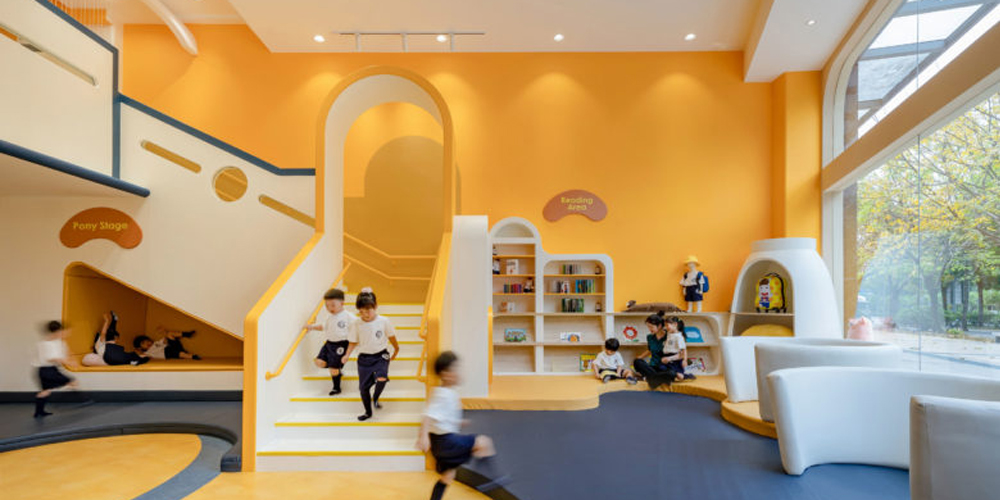Designing a kindergarten is more than just creating a place for children to learn and play. It's about creating an environment that promotes early childhood development and helps prepare kids for success in school and in life. That's why it's important to focus on modern kindergarten design principles when planning your facility. In this blog post, we will discuss some of the most important elements of a successful kindergarten design.
The Importance of a Modern Kindergarten Design
Aesthetics are important in any educational setting, but they are particularly crucial in early childhood education. The colors, textures, and overall design of a kindergarten classroom can have a big impact on how young students learn and develop. A well-designed space will be inviting and engaging, helping to create a positive learning environment.
Functionality is also key in kindergarten design. The layout of the room should allow for a variety of activities and encourage exploration and hands-on learning. Furniture and storage should be carefully considered to ensure that everything has a purpose and is easy to use.
Ultimately, the goal of a modern kindergarten design is to create a space that is both aesthetically pleasing and functional, providing an optimal learning environment for young students.
What Makes a Modern Kindergarten?
A modern kindergarten is designed to be both aesthetically pleasing and functional, providing an optimal learning environment for young students. The layout of the room should allow for a variety of activities and encourage exploration and hands-on learning. Furniture and storage should be carefully considered to ensure that everything has a purpose and is easy to use.
The colors, textures, and overall design of the space are also important in creating a positive learning environment. A modern kindergarten should be inviting and engaging, with bright colors and interesting textures that capture the attention of young learners.
Ultimately, the goal of a modern kindergarten design is to create a space that is both visually appealing and practical, making it an ideal setting for early childhood education.
The Benefits of a Modern Kindergarten Design
A modern kindergarten can also be more comfortable and efficient to maintain than a traditional classroom. The use of natural materials, such as wood and stone, can help to create a more relaxing atmosphere. And the careful placement of windows and lighting can help to reduce glare and create a more pleasant space.
In terms of efficiency, a modern kindergarten is often easier to clean and maintain than a traditional classroom. The use of materials that can be easily wiped down, such as laminate and vinyl, can help to reduce the amount of time and effort required for cleaning. And the use of built-in storage can help to keep the space tidy and organized.
How to Implement a Modern Kindergarten Design
If you are interested in implementing a modern kindergarten design, there are a few things to keep in mind.
- First, it is important to involve the entire team in the planning process. This includes the teachers, administrators, janitors, and any other staff who will be using the space.
- It is also important to consider the needs of the students. The layout of the room should be designed to accommodate a variety of activities and encourage exploration and hands-on learning. And the furniture and storage should be carefully considered to ensure that everything has a purpose and is easy to use.
- Finally, the colors, textures, and overall design of the space should be carefully chosen to create an inviting and positive learning environment. Bright colors and interesting textures can help to capture the attention of young learners, while a well-designed layout can provide an optimal learning experience.
Conclusion
A modern kindergarten design can have a big impact on how young students learn and develop. The layout of the room should allow for a variety of activities and encourage exploration and hands-on learning. Furniture and storage should be carefully considered to ensure that everything has a purpose and is easy to use. And the colors, textures, and overall design of the space should be carefully chosen to create an inviting and positive learning environment. Ultimately, the goal of a modern kindergarten design is to create a space that is both aesthetically pleasing and functional, providing an optimal learning environment for young students.


